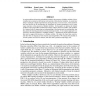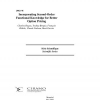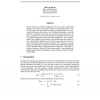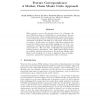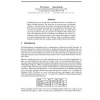NIPS
2000
14 years 27 days ago
2000
People can understand complex auditory and visual information, often using one to disambiguate the other. Automated analysis, even at a lowlevel, faces severe challenges, includin...
NIPS
2000
14 years 27 days ago
2000
A serious problem in learning probabilistic models is the presence of hidden variables. These variables are not observed, yet interact with several of the observed variables. As s...
NIPS
2000
14 years 27 days ago
2000
We describe a unified framework for the understanding of structure representation in primate vision. A model derived from this framework is shown to be effectively systematic in t...
NIPS
2000
14 years 27 days ago
2000
NIPS
2000
14 years 27 days ago
2000
Recent work has exploited boundedness of data in the unsupervised learning of new types of generative model. For nonnegative data it was recently shown that the maximum-entropy ge...
NIPS
2000
14 years 27 days ago
2000
When trying to recover 3D structure from a set of images, the most di cult problem is establishing the correspondence between the measurements. Most existing approaches assume tha...
NIPS
2000
14 years 27 days ago
2000
Explaining away has mostly been considered in terms of inference of states in belief networks. We show how it can also arise in a Bayesian context in inference about the weights g...
NIPS
2000
14 years 27 days ago
2000
NIPS
2000
14 years 27 days ago
2000
We develop an approach for a sparse representation for Gaussian Process (GP) models in order to overcome the limitations of GPs caused by large data sets. The method is based on a...
NIPS
2000
14 years 27 days ago
2000
Output coding is a general method for solving multiclass problems by reducing them to multiple binary classification problems. Previous research on output coding has employed, alm...

